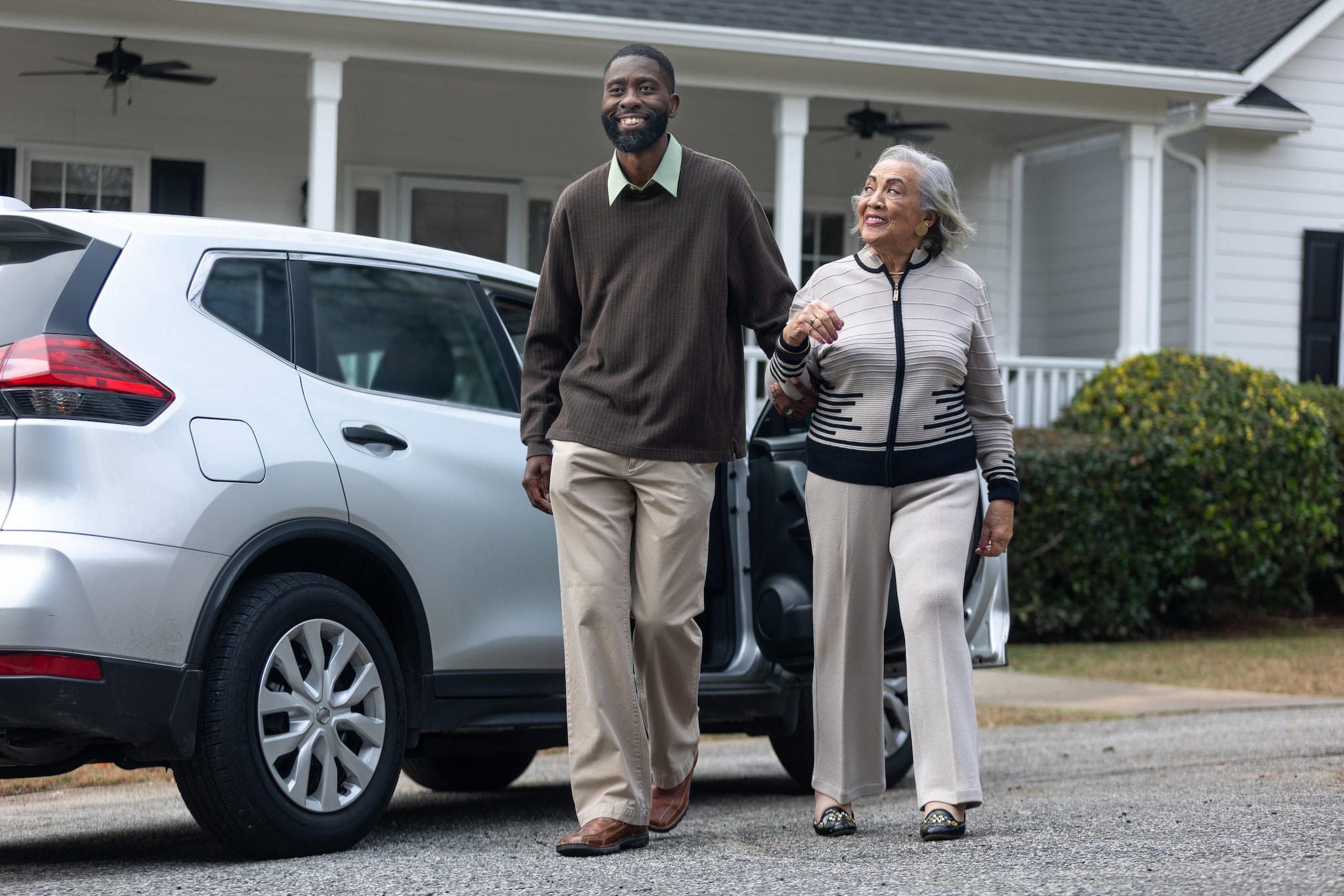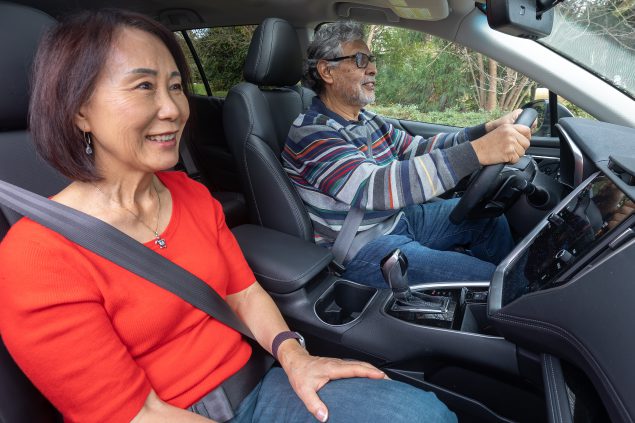Older Adult Drivers
- Thousands of older adults are injured or killed in the United States every year in traffic crashes
- Age, gender, and age-related changes are major risk factors
- Key steps to staying safe on the roads
- Additional steps to stay safe on the road
- CDC Resources
- Additional Resources
- Publications with More Information
- References

In 2020, there were almost 48 million licensed drivers ages 65 and older in the United States. This is a 68% increase since 2000.1
Driving helps older adults stay mobile and independent. But the risk of being injured or killed in a traffic crash increases as people age.
Thankfully, older adults can take steps to stay safer on the roads.
In 2020, about 7,500 older adults were killed in traffic crashes, and almost 200,000 were treated in emergency departments for crash injuries.2 This means that each day, 20 older adults are killed and almost 540 are injured in crashes.
- Drivers aged 70+ have higher crash death rates per 1,000 crashes than middle-aged drivers (aged 35-54).3 Higher crash death rates among this age group are primarily due to increased vulnerability to injury in a crash.
- Across all age groups, males have substantially higher crash death rates than females.4
- Age-related changes in vision, physical functioning, and the ability to reason and remember, as well as some diseases and medications, might affect some older adults’ driving abilities.5
The good news is that older adults are more likely to have safer driving behaviors than other age groups.
Taking these key steps can help adults of all ages, including older adults, stay safe on the road:
Always wear a seat belt as a driver or passenger
Seat belt use is one of the most effective ways to save lives and reduce injuries in crashes.6
Drive when conditions are safest
Drive during daylight and in good weather. Conditions such as poor weather7 and driving at night8 increase the likelihood of crash injuries and deaths.
Don’t drink and drive
Drinking and driving increases the risk of being in a crash because alcohol reduces coordination and impairs judgment.
- Use CDC’s MyMobility Plan, a plan to stay mobile and independent as you age.
- Follow a regular activity program to increase strength and flexibility.
- Ask your doctor or pharmacist to review medicines—both prescription and over-the counter—to reduce side effects and interactions. Read the Are Your Medicines Increasing Your Risk of a Fall or a Car Crash fact sheet to learn more.
- Have your eyes checked by an eye doctor at least once a year. Wear glasses and corrective lenses as required.
- Plan your route before you drive.
- Find the safest route with well-lit streets, intersections with left-turn signals, and easy parking.
- Leave a large following distance between your car and the car in front of you.
- Avoid distractions in your car, such as listening to a loud radio, talking or texting on your phone, and eating.
- Consider potential alternatives to driving, such as riding with a friend, using ride share services, or taking public transit.
- AAA: Senior Driver Safety and Mobility
- AARP: Driver Safety
- American Occupational Therapy Association: Driving and Community Mobility
- Clearinghouse for Older Road User Safety (CHORUS)
- National Highway Traffic Safety Administration: Older Drivers
- Rides In Sight
- University of Michigan, Transportation Research Institute: Driving Decisions Workbook
- Beck LF, Luo F, West BA. Examining patterns of driving avoidance behaviors among older people using latent class analysis. Journal of Applied Gerontology 2022; e-pub ahead of print. https://doi.org/10.1177/07334648221086953
- Siegfried AL, Bayne A, Beck LF, Freund K. Older adult willingness to use fully autonomous vehicle (FAV) ride sharing. Geriatrics 2021;6(2):47.
- Bayne A, Siegfried A, Beck LF, Freund K. Barriers and facilitators of older adults’ use of ride share services. Journal of Transport and Health 2021;21:101055.
- Freund K, Bayne A, Beck, L, Siegfried A, Warren J, Nadel T, Natarajan A. Special report from the CDC: Characteristics of ride share services for older adults in the United States [PDF – 25 pages] Journal of Safety Research 2020;72:9-19.
- Freund K, Bayne A, Siegfried A, Warren J, Nadel T, Natarajan A, Beck, L. 2019. Environmental scan of ride share services available for older adults [White paper] Chicago; NORC at the University of Chicago.
- Bergen G, West BA, Luo F, Bird DC, Freund K, Fortinsky RH, Staplin L. How do older adult drivers self-regulate? Characteristics of self-regulation classes defined by latent class analysis. Journal of Safety Research 2017; 61: 205-210.
- Bird DC, Freund K, Fortinsky RH, Staplin L, West BA, Bergen G, Downs J. Driving self-regulation and ride service utilization in a multicommunity, multistate sample of U.S. older adults. Traffic Injury Prevention 2017; 18: 267-272.
- Federal Highway Administration, Department of Transportation (US). Highway Statistics 2020. Washington (DC): FHWA; 2021. Available at: https://www.fhwa.dot.gov/policyinformation/statistics/2020/. Accessed 21 April 2022.
- Centers for Disease Control and Prevention, National Center for Injury Prevention and Control. Web-based Injury Statistics Query and Reporting System (WISQARS). Atlanta, GA: CDC; 2022. Available at: https://www.cdc.gov/injury/wisqars. Accessed 21 April 2022.
- Cox AE and Cicchino JB. Continued trends in older driver crash involvement rates in the United States: Data through 2017–2018. Journal of Safety Research 2021; 77: 288-295. https://doi.org/10.1016/j.jsr.2021.03.013
- Insurance Institute for Highway Safety (IIHS). Fatality facts 2020, Older people. Arlington (VA): IIHS; 2022. Available at: https://www.iihs.org/topics/fatality-statistics/detail/older-people. Accessed 21 April 2022.
- Pomidor A, ed. Clinician’s Guide to Assessing and Counseling Older Drivers, 4th Edition. New York: The American Geriatrics Society; 2019. Available at: https://geriatricscareonline.org/toc/clinicians-guide-to-assessing-and-counseling-older-drivers-4th-edition/B047
- National Highway Traffic Safety Administration, Department of Transportation (US). Traffic Safety Facts: 2019 Data: Occupant Protection. US Department of Transportation, Washington (DC): 2021. Available at: https://crashstats.nhtsa.dot.gov/Api/Public/ViewPublication/813176. Accessed 21 April 2022.
- Malin F, Norros I, Innamma S. Accident risk of road and weather conditions on different road types. Accident Analysis and Prevention 2019; 122: 181-188; https://doi.org/10.1016/j.aap.2018.10.014.
- National Highway Traffic Safety Administration, Department of Transportation (US). Traffic Safety Facts: 2007 Data: Passenger vehicle occupant fatalities by day and night- a contrast. US Department of Transportation, Washington (DC): 2007. Available at: https://crashstats.nhtsa.dot.gov/Api/Public/ViewPublication/810637. Accessed 21 April 2022.
